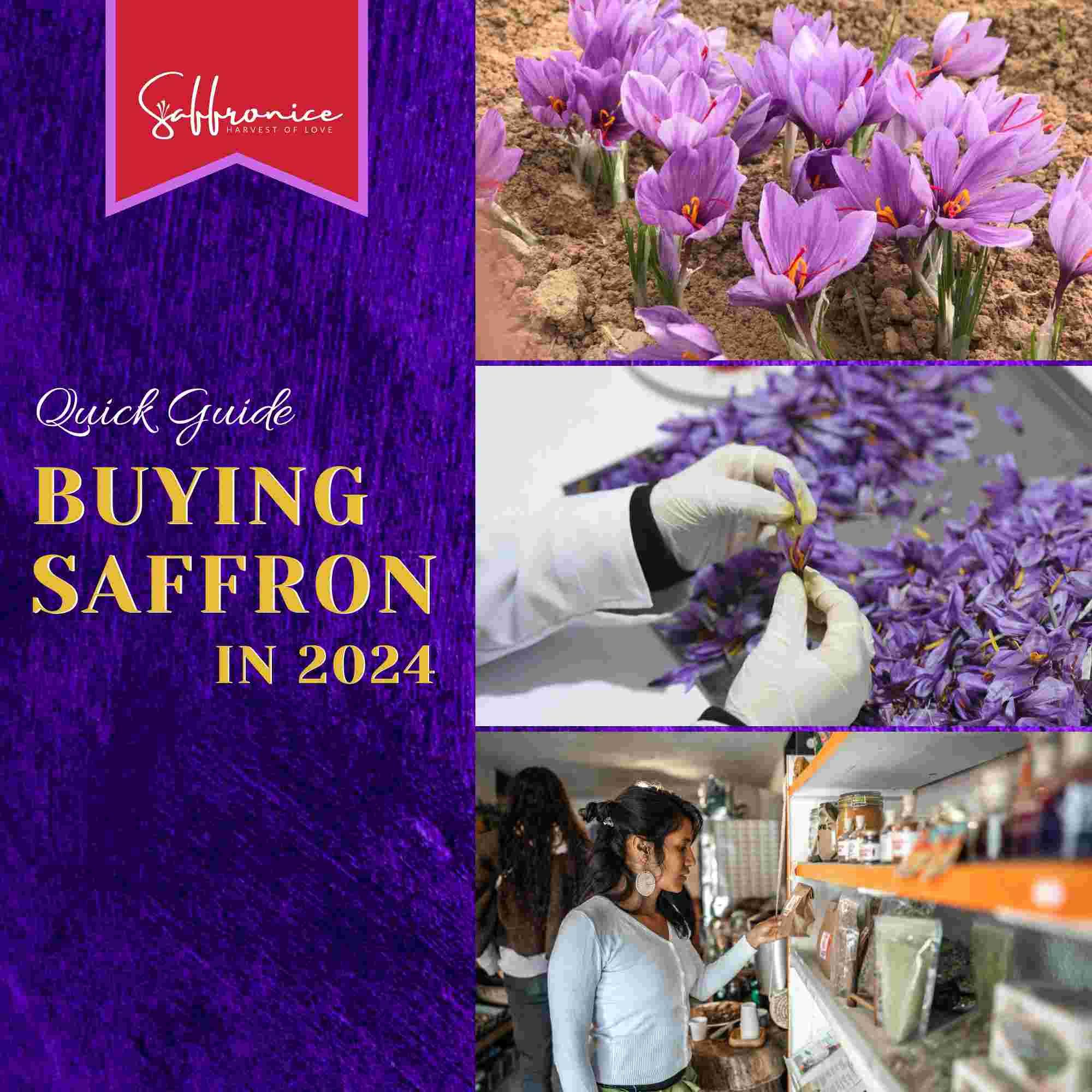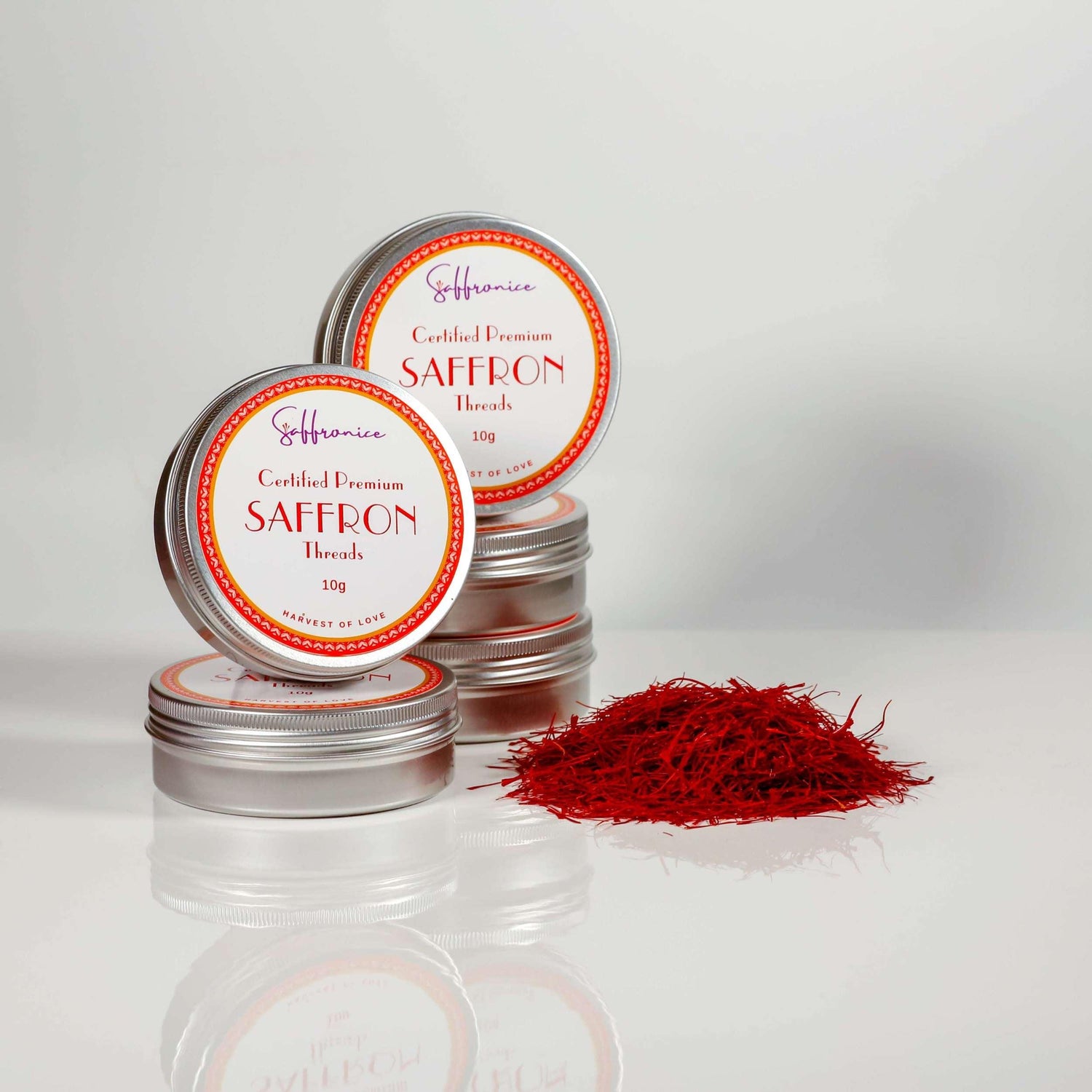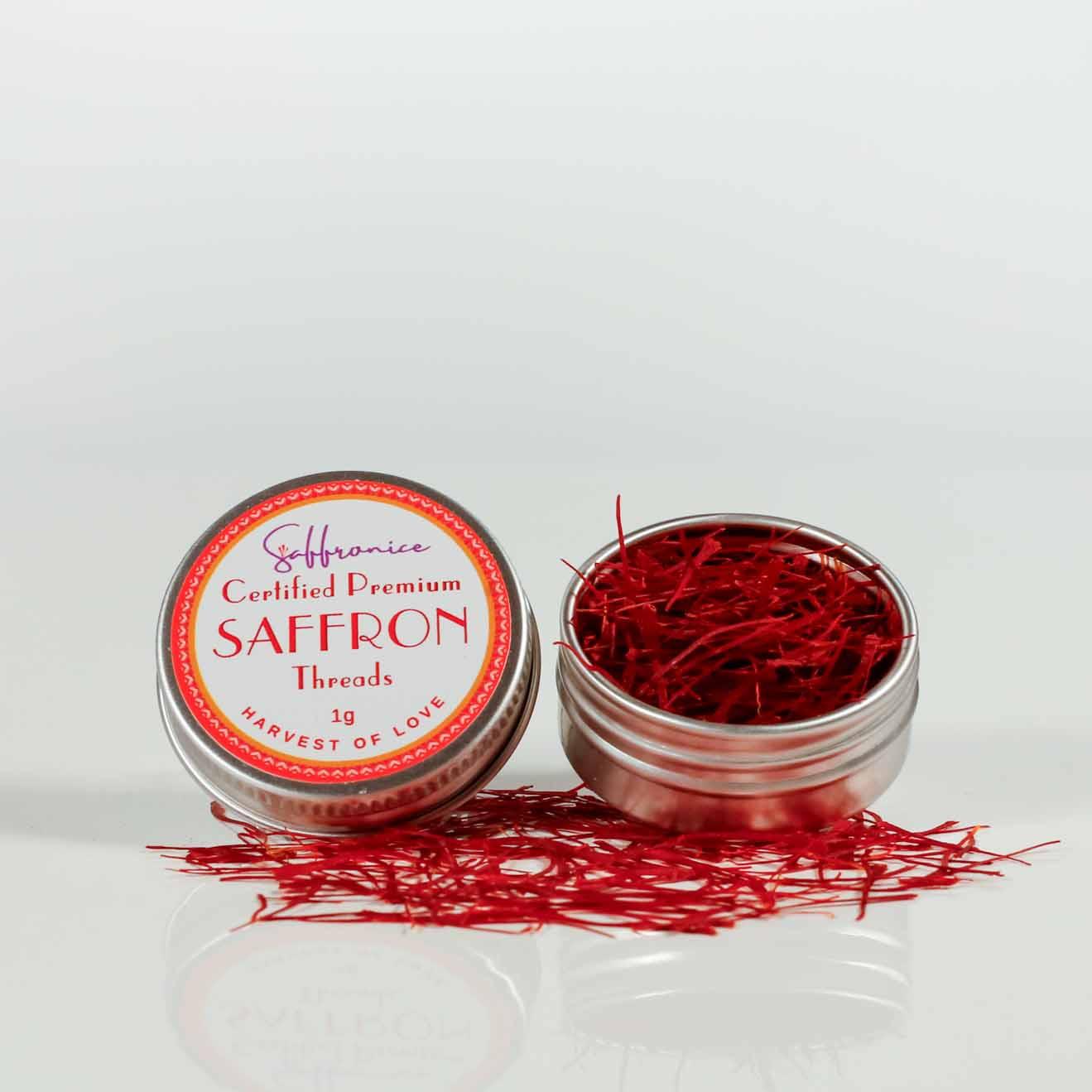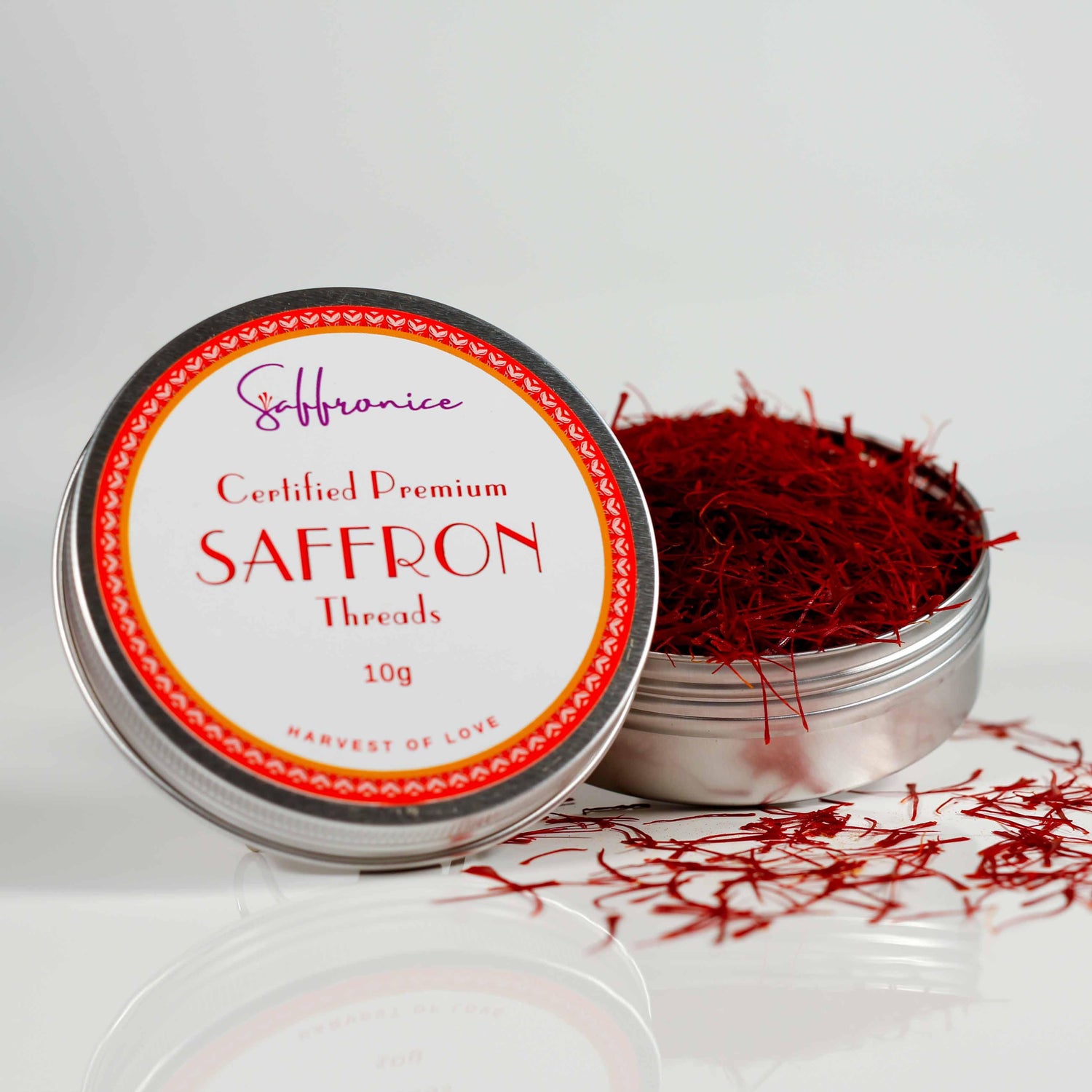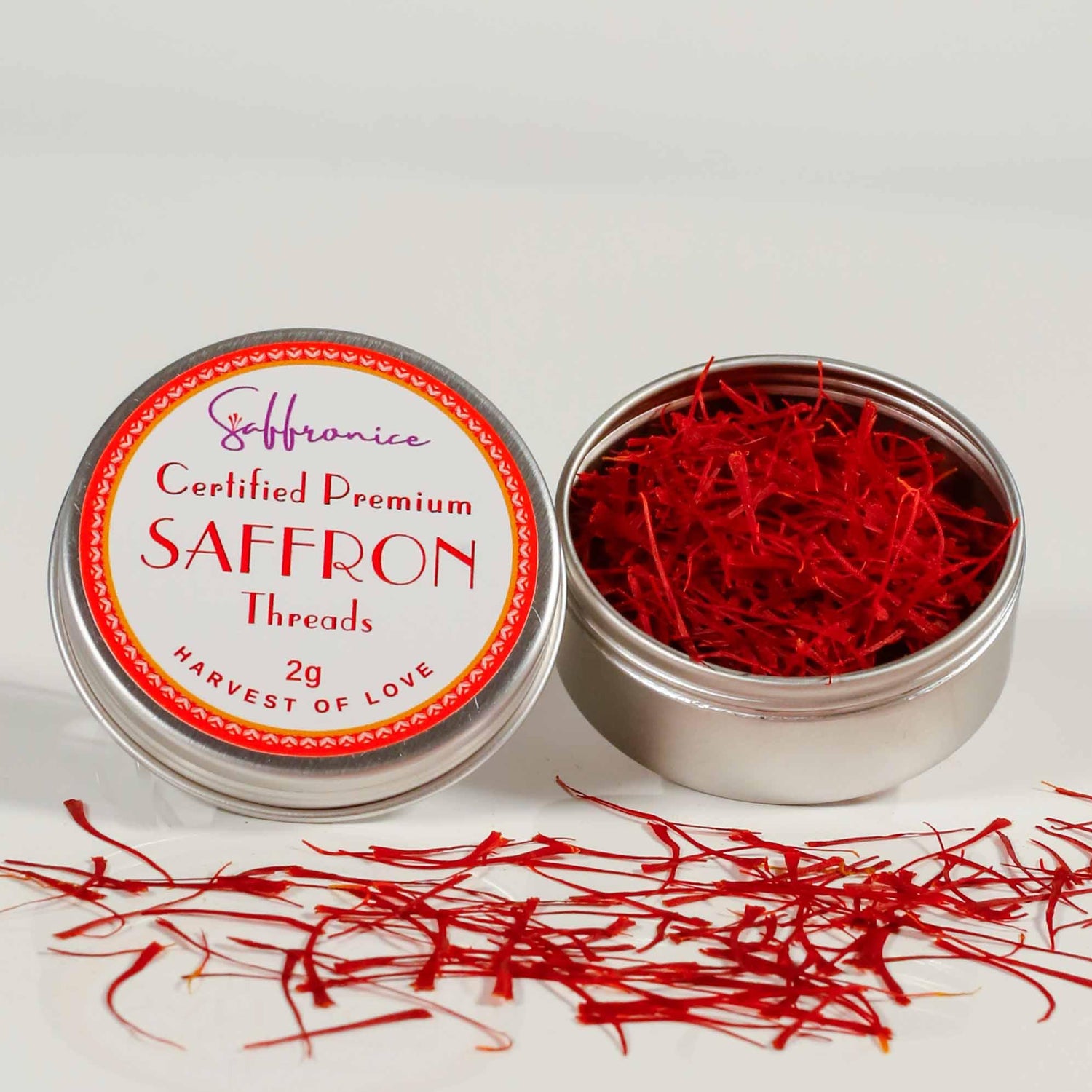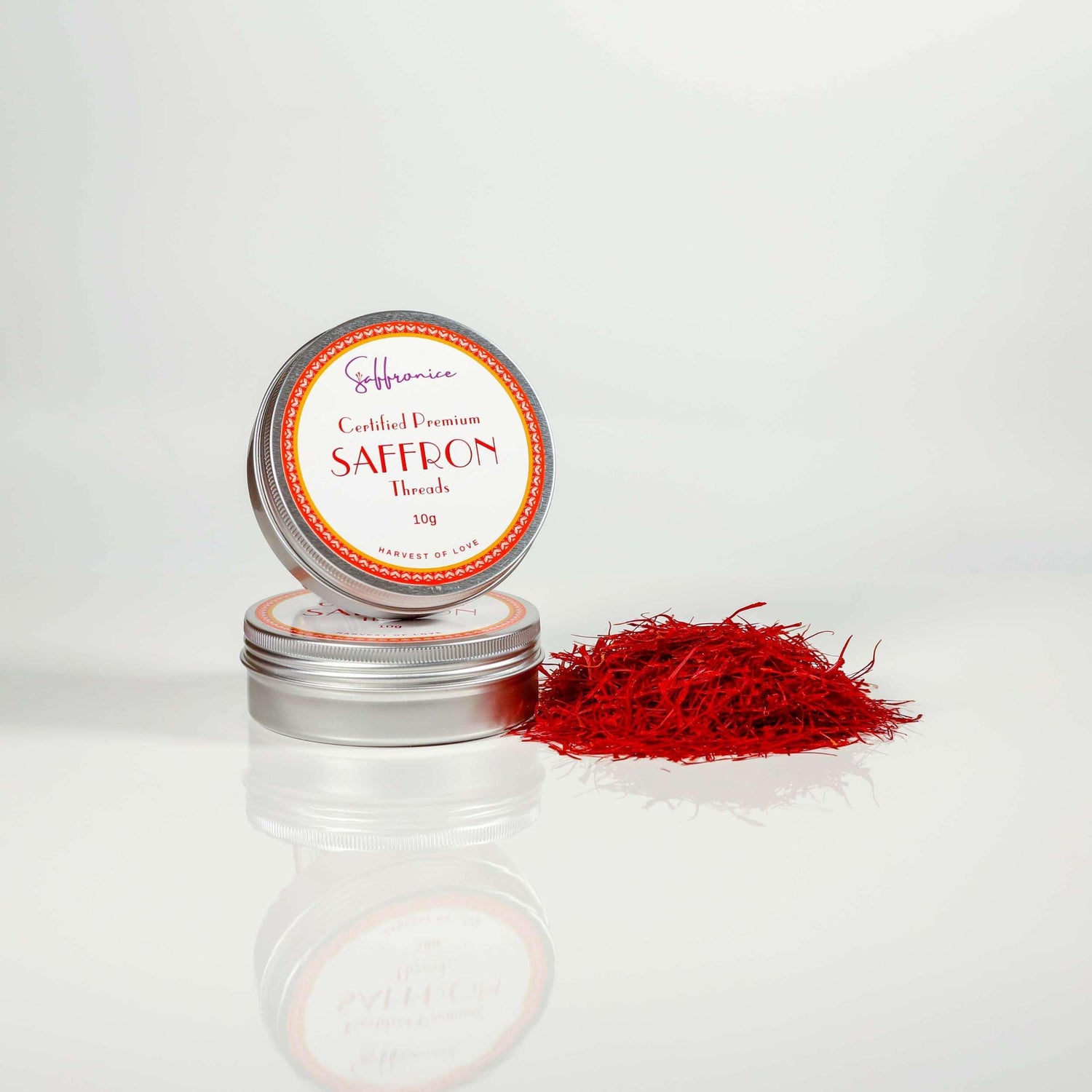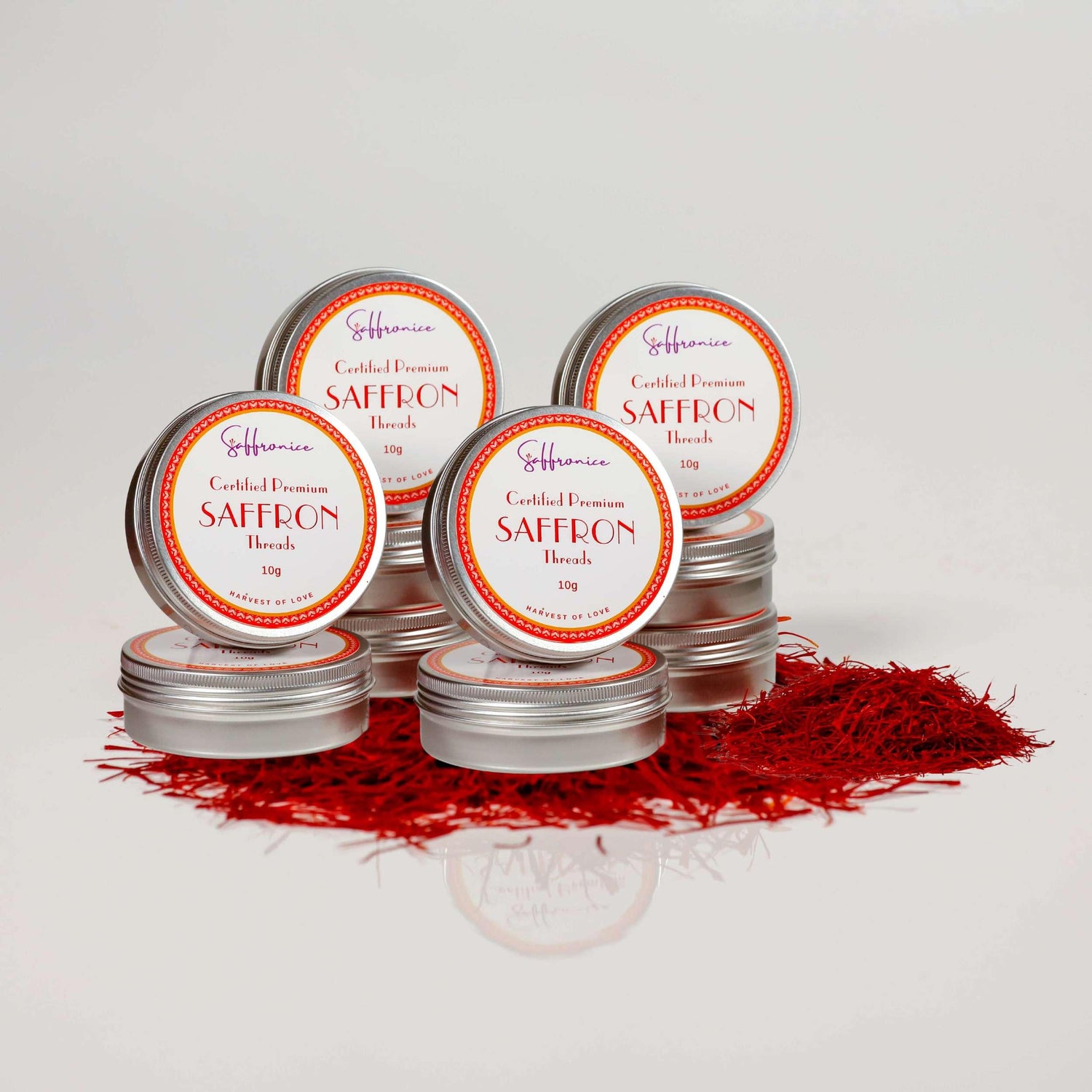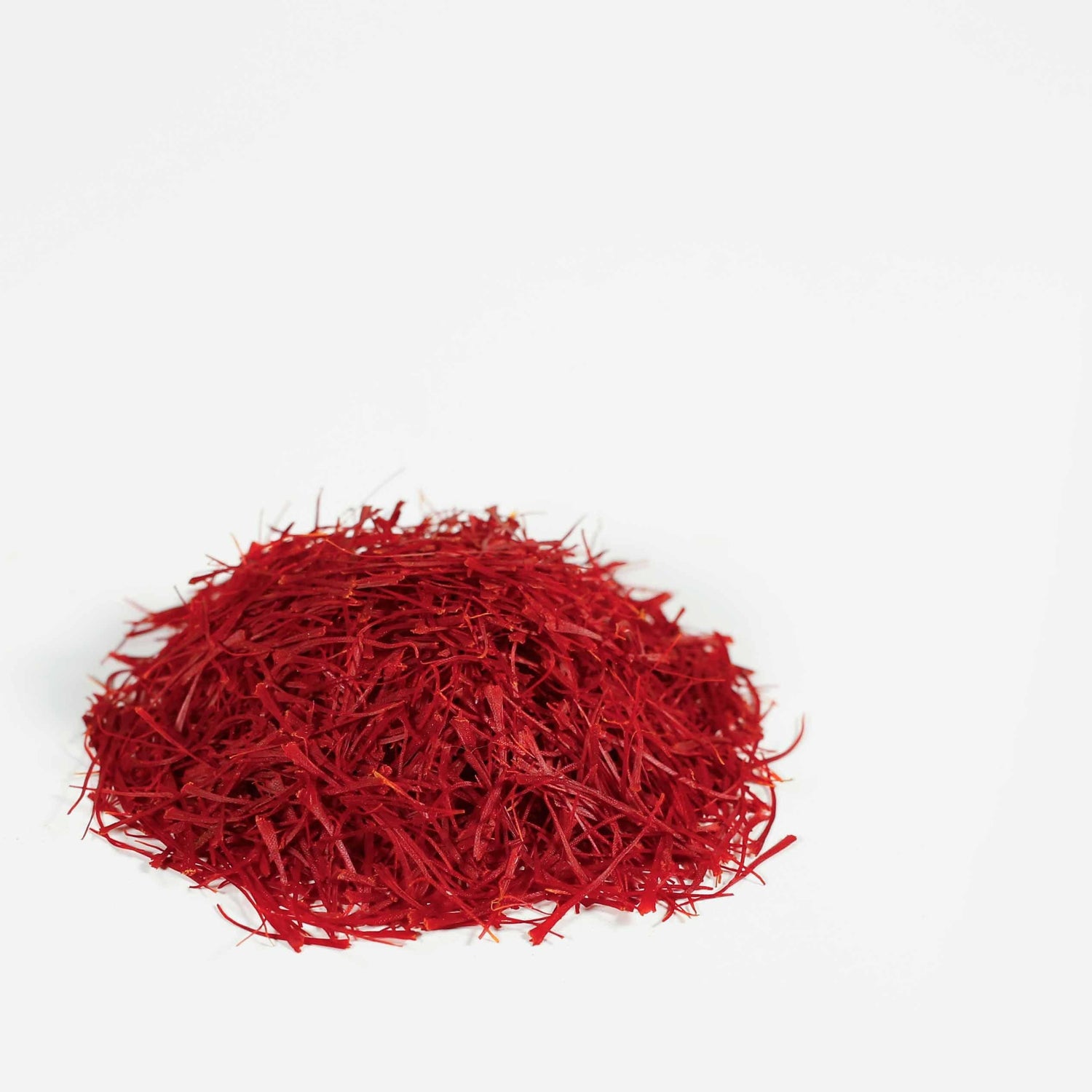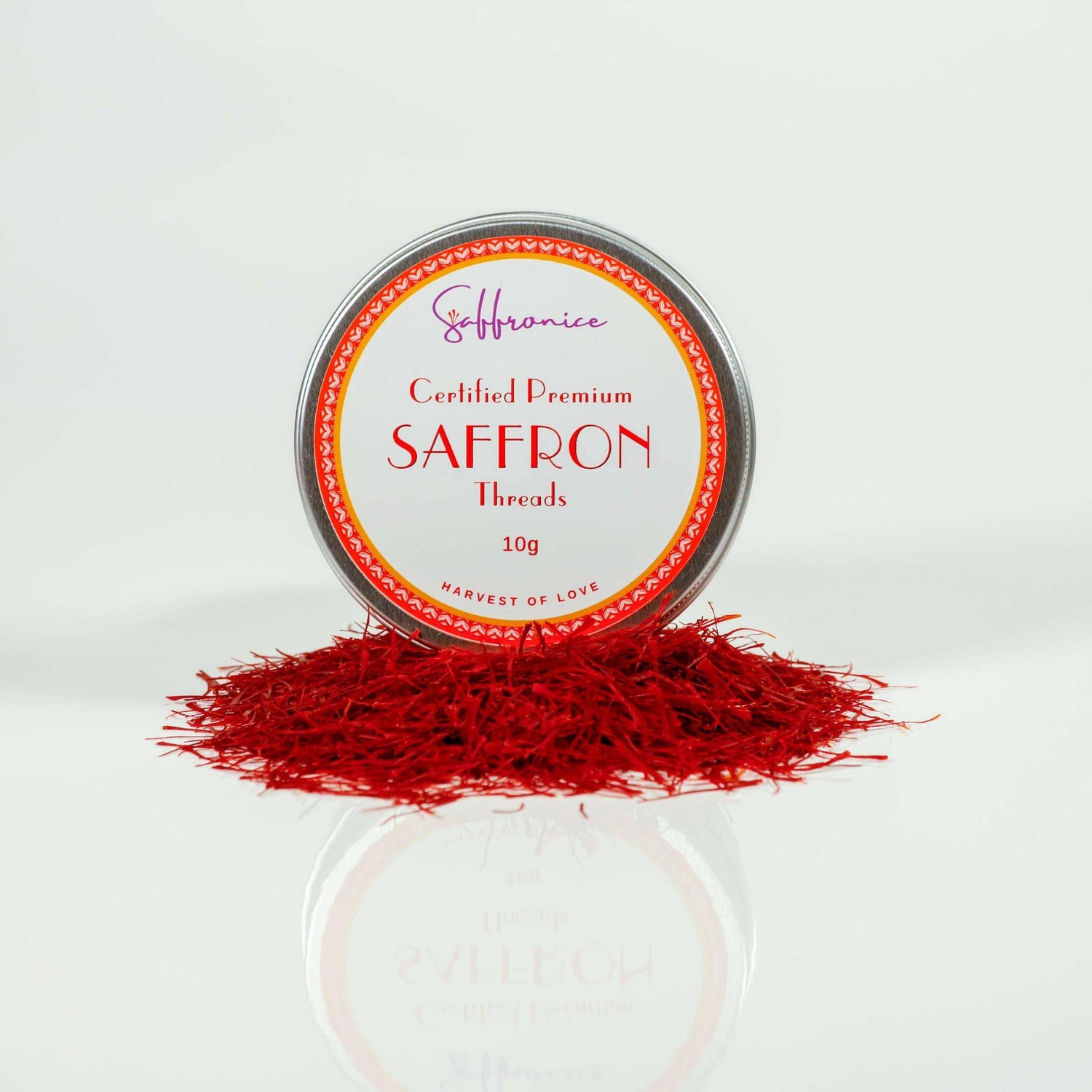Global Saffron Surge: From Gastropubs to Michelin-Starred Restaurants
Saffron is surging in popularity, from little gastropubs in the UK to the Michelin-starred restaurants of Europe, from food trucks in the USA to the new fusion hotspots of Asia. And with demand skyrocketing everywhere, the world’s major producers are looking to increase their output, and more and more saffron distributors and wholesalers are popping up to meet the market’s needs.
Saffron Shopping Guide: Navigating the Expanding Market
For consumers, this means there are more choices than ever when it comes to buying saffron. It’s available in local supermarkets as well as specialty food shops, through online sellers and in ethnic groceries.
But this explosion of options also means that knowing where to buy saffron—really top-quality saffron, anyway—is more confusing than ever.

Understanding Saffron Quality: Avoiding Low-Grade Products
Saffron from large, industrial farming operations is often produced using shortcuts that result in a lower quality product. Worse yet, their saffron may contain pesticides or other harsh chemicals.
And sadly, some unscrupulous saffron vendors are even selling an adulterated product, meaning that unwary buyers run the risk of purchasing watered-down or inferior saffron (or should we say, “saffron”).
In this short guide, we’ll tell you where to buy saffron that is actually worth the high price tag—and how to avoid the most common mistakes that new saffron buyers often make.
Saffron Buying Tips: Ensuring Authenticity and High Quality
Saffron is saffron, it’s all the same thing, right?
If only it were that simple. But saffron is like other ultra-premium food products: there is a complex grading and standards system in place to differentiate the really top-notch varieties from lower quality products and imitators.

Saffron Grades Explained: Selecting the Best for Your Needs
Understanding the different grades of saffron is crucial for selecting the best quality for your culinary and medicinal needs. Among the various grades available, Negin, Super Negin, and Sargol stand out for their superior quality.
-
Negin Saffron: This grade is known for its long, thick threads and deep red color. Negin saffron threads are carefully handpicked, ensuring minimal breakage and maximum potency. It is highly prized for its strong aroma and intense flavor, making it ideal for dishes where saffron's taste and color are paramount.
-
Super Negin Saffron: Considered the cream of the crop, Super Negin takes everything great about Negin saffron and elevates it. The threads are even longer and more luxurious, with a deep, uniform red color indicating minimal floral waste and maximum stigmas. Super Negin is often reserved for the most special culinary applications, where its extraordinary aroma and robust flavor can truly shine.
-
Sargol Saffron: Sargol literally means "top of the flower" in Persian, which is an apt description for this grade. It consists only of the red stigma tips, devoid of any yellow or white plant parts. This focus on the stigma means Sargol saffron is highly concentrated and flavorful. While it may lack the thread length of Negin and Super Negin, its quality in terms of color and flavor concentration is remarkable.
Gram for gram, these grades of saffron will provide superior color, aroma, flavor, and medicinal benefits. They are especially sought after for use in high-end culinary dishes, as well as in traditional medicine, due to their high levels of crocin, picrocrocin, and safranal – the compounds responsible for saffron's health benefits.
When purchasing saffron, it's important to consider what you'll be using it for. For dishes where saffron is the star, such as in risottos, paellas, or saffron-infused desserts, opting for Super Negin or Negin can elevate the dish significantly. For everyday cooking where saffron is used more as a background flavor, Sargol saffron offers a more cost-effective yet still high-quality option.
Remember, the quality of saffron not only influences the taste and aroma of your dishes but can also affect the health benefits you derive from it. Always source your saffron from reputable vendors to ensure you're getting the grade and quality you pay for.
Sourcing Pure Saffron: The Importance of Origin
When deciding where to buy saffron, you should also consider where it actually came from, originally.
Saffron may be a spice—plucked, processed, and dried by the time it reaches your kitchen—but it comes from the delicate little crocus flower. First and foremost, saffron is a living thing...and one that’s tremendously sensitive to its environment.

Traditional Saffron Harvesting: Why Method Matters
Just like the best wine comes from the best grapes, which only take on their full flavour in a very few parts of the world, with just the right environmental conditions, genuine Pure Saffron Threads only comes from a handful of growing locations.
It’s generally agreed that the Khorasan region of Iran has the ideal combination of climate as well as soil and water quality for producing really top-grade saffron. But even in Khorasan, there are differences between saffron farming operations.
You have everything from large new industrial farming outfits, with all that this entails, to those tiny family farms that have been working with the same heritage Saffron bulbs for generations.
So rule of thumb: If at all possible, look for Persian saffron suppliers who avoid the agribusiness end of saffron production, and 9 times out of 10 you’ll end up with a superior product.
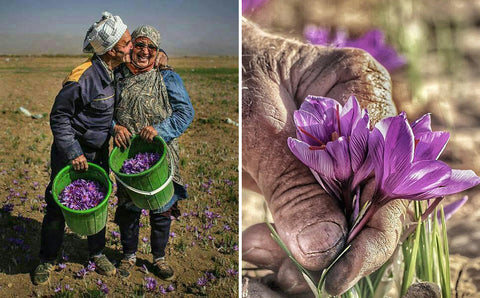
Saffron harvesting is one of the most delicate, labour-intensive processes in all of agriculture, which is a large part of why saffron is so expensive.
Saffron plants are most active just before dawn. This is why, traditionally, they are only harvested in the dark, in the narrow window just before the sun rises—and never in the heat of the day.
Unfortunately, some of the larger farming concerns have abandoned these traditional methods in order to produce larger quantities of saffron in order to meet the demand of their wholesalers and exporters.
That’s bad news for saffron buyers: harvesting this way drastically reduces the potency of the final product. That means less flavour, fainter colour, weaker aroma, and decreased medicinal effects.
All of which translates to less value for money than if you’d bought from a small-batch, traditional grower!

Assessing Saffron Potency: The Role of ISO Standards
And saffron potency isn’t just a subjective matter—it’s actually regulated by ISO standard (ISO 3632) and can be lab tested. These tests prove (scientifically) that not all saffron is the same.
The harvest is perhaps the single biggest factor in determining saffron potency and purity. So look for saffron suppliers who only source from farms which still do things the old-fashioned way. And ideally, check to make sure that their end product has been evaluated in a lab to meet (or exceed) the ISO standard.
Preserving Saffron Quality: Traditional vs. Industrial Drying Methods
Once the saffron has been plucked, it must be dried before it’s ready to sell or ship. And here too, you’ll find the giant corporate farms taking shortcuts to meet their unrealistic production quotas: they actually use harsh machine and heat dehydration techniques to dry the saffron faster!
Unfortunately for them (and anyone who buys from them), faster isn’t always better. Machine drying is virtually guaranteed to break down the fragile biochemical compounds in saffron that make the spice so valuable in the first place. And this means (you guessed it) lower potency and quality!

The little farmers in Iran, on the other hand, have known the best way to dry saffron for about 4000 years. Want to know the secret?
Place the plucked stigmas in a cool, shady, well-ventilated room. Then wait. The dry desert air will do its work in a few days!
Low tech, huh? But effective. This method dries saffron for sale and shipping without losing one iota of its flavour, aroma, or medicinal power.
So when deciding where to buy saffron, seek out sellers who are committed to the old and slow way of processing their product.
Choosing Reputable Saffron Suppliers: Tips for First-Time Buyers
The saffron boom of the past decade or so has resulted in a host of new players in the market.
And some of these folks are actually great—committed to producing a top-end product and delivering a great customer experience.
Others? Ahem...not so much. We hesitate to use the term “fly by night”, but unfortunately there do seem to be some businesses out there just looking to cash in on the saffron craze and make a quick buck.
So do your research carefully and make sure you’re buying from a well-established company—either one that’s been around for years or at least seems to have a good track record of satisfied customers.
Experience the Difference: Sampling High-Quality Saffron
And remember: there’s no substitute for actually trying the product out for yourself in your own kitchen! That’s why most professional vendors will offer trial sizes of saffron in the 0.5g, 1g and 2g range, so that you can sample their product for yourself before committing to a larger purchase.
We hope you’ve enjoyed this guide to buying saffron!
View Other Interesting Saffron Related Articles


